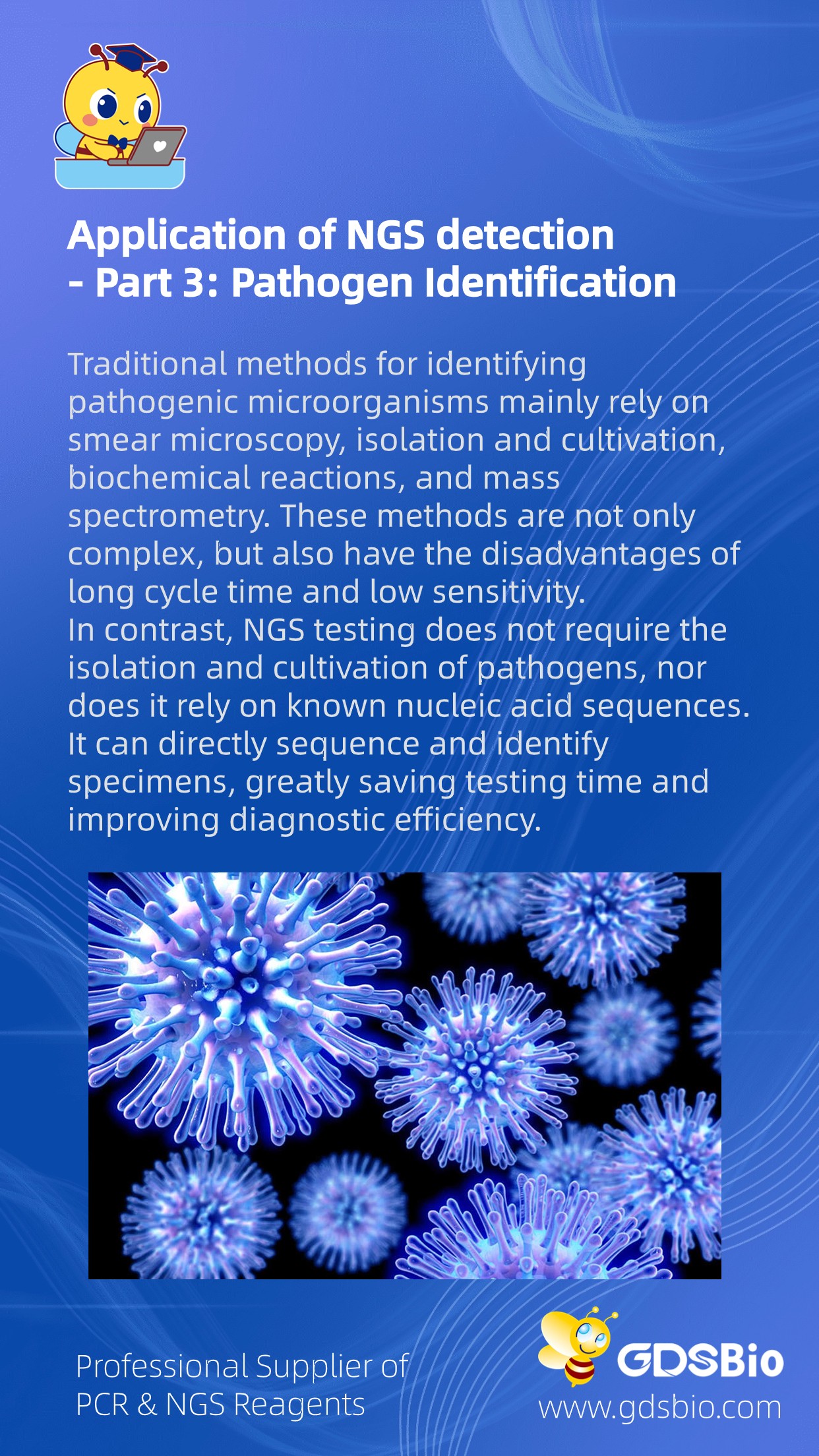Application of NGS detection - Part 3: Pathogen Identification
Traditional methods for identifying pathogenic microorganisms mainly rely on smear microscopy, isolation and cultivation, biochemical reactions, and mass spectrometry. These methods are not only complex, but also have the disadvantages of long cycle time and low sensitivity.
For example, the identification of mycobacterial species requires up to 30 to 40 days, while some obligate bacteria and viruses have extremely demanding requirements for cultivation conditions, and even cannot be cultivated.
In contrast, NGS testing does not require the isolation and cultivation of pathogens, nor does it rely on known nucleic acid sequences. It can directly sequence and identify specimens, greatly saving testing time and improving diagnostic efficiency.

 Tel: +86 20 31600213
Tel: +86 20 31600213  Sales EMail: order@gdsbio.com
Sales EMail: order@gdsbio.com 




